HSBC 2005 Annual Report Download - page 61
Download and view the complete annual report
Please find page 61 of the 2005 HSBC annual report below. You can navigate through the pages in the report by either clicking on the pages listed below, or by using the keyword search tool below to find specific information within the annual report.-
 1
1 -
 2
2 -
 3
3 -
 4
4 -
 5
5 -
 6
6 -
 7
7 -
 8
8 -
 9
9 -
 10
10 -
 11
11 -
 12
12 -
 13
13 -
 14
14 -
 15
15 -
 16
16 -
 17
17 -
 18
18 -
 19
19 -
 20
20 -
 21
21 -
 22
22 -
 23
23 -
 24
24 -
 25
25 -
 26
26 -
 27
27 -
 28
28 -
 29
29 -
 30
30 -
 31
31 -
 32
32 -
 33
33 -
 34
34 -
 35
35 -
 36
36 -
 37
37 -
 38
38 -
 39
39 -
 40
40 -
 41
41 -
 42
42 -
 43
43 -
 44
44 -
 45
45 -
 46
46 -
 47
47 -
 48
48 -
 49
49 -
 50
50 -
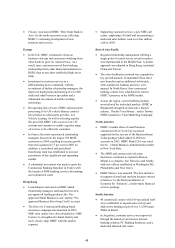 51
51 -
 52
52 -
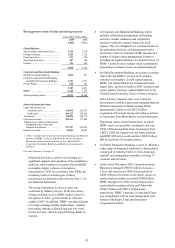 53
53 -
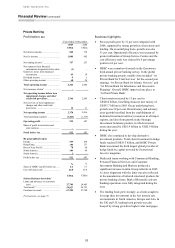 54
54 -
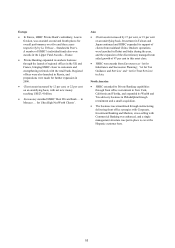 55
55 -
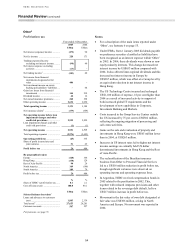 56
56 -
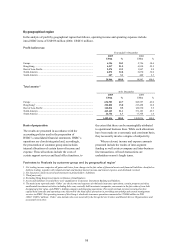 57
57 -
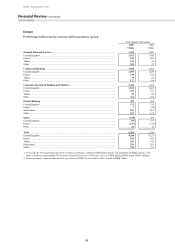 58
58 -
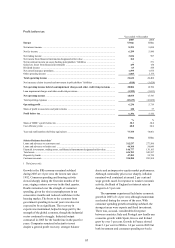 59
59 -
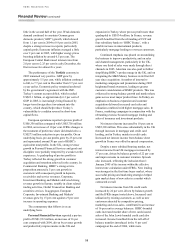 60
60 -
 61
61 -
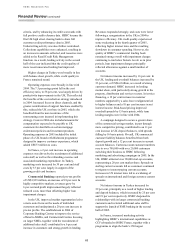 62
62 -
 63
63 -
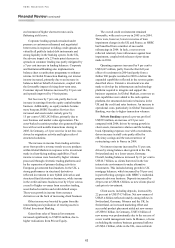 64
64 -
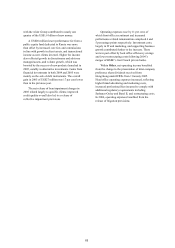 65
65 -
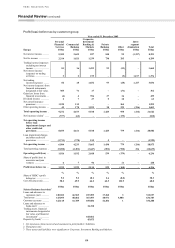 66
66 -
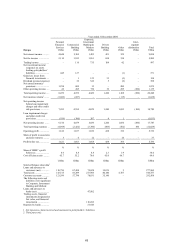 67
67 -
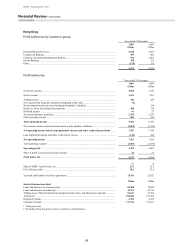 68
68 -
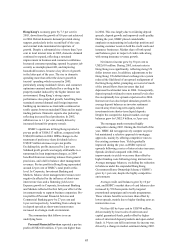 69
69 -
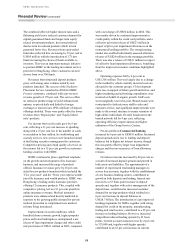 70
70 -
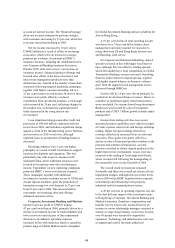 71
71 -
 72
72 -
 73
73 -
 74
74 -
 75
75 -
 76
76 -
 77
77 -
 78
78 -
 79
79 -
 80
80 -
 81
81 -
 82
82 -
 83
83 -
 84
84 -
 85
85 -
 86
86 -
 87
87 -
 88
88 -
 89
89 -
 90
90 -
 91
91 -
 92
92 -
 93
93 -
 94
94 -
 95
95 -
 96
96 -
 97
97 -
 98
98 -
 99
99 -
 100
100 -
 101
101 -
 102
102 -
 103
103 -
 104
104 -
 105
105 -
 106
106 -
 107
107 -
 108
108 -
 109
109 -
 110
110 -
 111
111 -
 112
112 -
 113
113 -
 114
114 -
 115
115 -
 116
116 -
 117
117 -
 118
118 -
 119
119 -
 120
120 -
 121
121 -
 122
122 -
 123
123 -
 124
124 -
 125
125 -
 126
126 -
 127
127 -
 128
128 -
 129
129 -
 130
130 -
 131
131 -
 132
132 -
 133
133 -
 134
134 -
 135
135 -
 136
136 -
 137
137 -
 138
138 -
 139
139 -
 140
140 -
 141
141 -
 142
142 -
 143
143 -
 144
144 -
 145
145 -
 146
146 -
 147
147 -
 148
148 -
 149
149 -
 150
150 -
 151
151 -
 152
152 -
 153
153 -
 154
154 -
 155
155 -
 156
156 -
 157
157 -
 158
158 -
 159
159 -
 160
160 -
 161
161 -
 162
162 -
 163
163 -
 164
164 -
 165
165 -
 166
166 -
 167
167 -
 168
168 -
 169
169 -
 170
170 -
 171
171 -
 172
172 -
 173
173 -
 174
174 -
 175
175 -
 176
176 -
 177
177 -
 178
178 -
 179
179 -
 180
180 -
 181
181 -
 182
182 -
 183
183 -
 184
184 -
 185
185 -
 186
186 -
 187
187 -
 188
188 -
 189
189 -
 190
190 -
 191
191 -
 192
192 -
 193
193 -
 194
194 -
 195
195 -
 196
196 -
 197
197 -
 198
198 -
 199
199 -
 200
200 -
 201
201 -
 202
202 -
 203
203 -
 204
204 -
 205
205 -
 206
206 -
 207
207 -
 208
208 -
 209
209 -
 210
210 -
 211
211 -
 212
212 -
 213
213 -
 214
214 -
 215
215 -
 216
216 -
 217
217 -
 218
218 -
 219
219 -
 220
220 -
 221
221 -
 222
222 -
 223
223 -
 224
224 -
 225
225 -
 226
226 -
 227
227 -
 228
228 -
 229
229 -
 230
230 -
 231
231 -
 232
232 -
 233
233 -
 234
234 -
 235
235 -
 236
236 -
 237
237 -
 238
238 -
 239
239 -
 240
240 -
 241
241 -
 242
242 -
 243
243 -
 244
244 -
 245
245 -
 246
246 -
 247
247 -
 248
248 -
 249
249 -
 250
250 -
 251
251 -
 252
252 -
 253
253 -
 254
254 -
 255
255 -
 256
256 -
 257
257 -
 258
258 -
 259
259 -
 260
260 -
 261
261 -
 262
262 -
 263
263 -
 264
264 -
 265
265 -
 266
266 -
 267
267 -
 268
268 -
 269
269 -
 270
270 -
 271
271 -
 272
272 -
 273
273 -
 274
274 -
 275
275 -
 276
276 -
 277
277 -
 278
278 -
 279
279 -
 280
280 -
 281
281 -
 282
282 -
 283
283 -
 284
284 -
 285
285 -
 286
286 -
 287
287 -
 288
288 -
 289
289 -
 290
290 -
 291
291 -
 292
292 -
 293
293 -
 294
294 -
 295
295 -
 296
296 -
 297
297 -
 298
298 -
 299
299 -
 300
300 -
 301
301 -
 302
302 -
 303
303 -
 304
304 -
 305
305 -
 306
306 -
 307
307 -
 308
308 -
 309
309 -
 310
310 -
 311
311 -
 312
312 -
 313
313 -
 314
314 -
 315
315 -
 316
316 -
 317
317 -
 318
318 -
 319
319 -
 320
320 -
 321
321 -
 322
322 -
 323
323 -
 324
324 -
 325
325 -
 326
326 -
 327
327 -
 328
328 -
 329
329 -
 330
330 -
 331
331 -
 332
332 -
 333
333 -
 334
334 -
 335
335 -
 336
336 -
 337
337 -
 338
338 -
 339
339 -
 340
340 -
 341
341 -
 342
342 -
 343
343 -
 344
344 -
 345
345 -
 346
346 -
 347
347 -
 348
348 -
 349
349 -
 350
350 -
 351
351 -
 352
352 -
 353
353 -
 354
354 -
 355
355 -
 356
356 -
 357
357 -
 358
358 -
 359
359 -
 360
360 -
 361
361 -
 362
362 -
 363
363 -
 364
364 -
 365
365 -
 366
366 -
 367
367 -
 368
368 -
 369
369 -
 370
370 -
 371
371 -
 372
372 -
 373
373 -
 374
374 -
 375
375 -
 376
376 -
 377
377 -
 378
378 -
 379
379 -
 380
380 -
 381
381 -
 382
382 -
 383
383 -
 384
384 -
 385
385 -
 386
386 -
 387
387 -
 388
388 -
 389
389 -
 390
390 -
 391
391 -
 392
392 -
 393
393 -
 394
394 -
 395
395 -
 396
396 -
 397
397 -
 398
398 -
 399
399 -
 400
400 -
 401
401 -
 402
402 -
 403
403 -
 404
404 -
 405
405 -
 406
406 -
 407
407 -
 408
408 -
 409
409 -
 410
410 -
 411
411 -
 412
412 -
 413
413 -
 414
414 -
 415
415 -
 416
416 -
 417
417 -
 418
418 -
 419
419 -
 420
420 -
 421
421 -
 422
422 -
 423
423 -
 424
424
 |
 |
59
sophisticated risk-based pricing enabled customer
rates to be differentiated more acutely.
Net interest income from other unsecured
lending in the UK increased by 4 per cent. The
launch of differentiated pricing initiatives in April,
notably through preferential personal lending rate
offers to lower-risk customers, helped boost average
loan balances by 9 per cent, and increase HSBC’s
market share of gross advances from 10.7 to 11.7 per
cent. Focused sales and marketing, notably the
‘January sale’, also contributed to higher balances.
As indebtedness levels grew, growth was curtailed
through a tightening of underwriting criteria in the
more difficult credit environment. The introduction
of preferential pricing, and a mix change towards
higher value but lower-yielding loans, led to a
48 basis point narrowing of spreads.
Recruitment of new current account customers
was strong, and HSBC’s market share of new current
accounts increased to 14.7 per cent, largely through
brand-led awareness and marketing. The launch of
two new current account propositions, including
HSBC’s first value-driven packaged account in the
UK market, and improved cross-sales aided growth
of 6 per cent in overall customer accounts. This led
to an increase in net interest income from UK
current accounts of 5 per cent to US$1.0 billion,
broadly in line with the 6 per cent increase in
average balances.
Sales of new UK savings accounts increased
markedly, and average balances rose by 15 per cent,
driven by a greater front-line focus, competitive
pricing and the launch of new products, including
‘Regular Saver’ and ‘Online Saver’. Included in this
was growth of over US$1.2 billion in First Direct’s
‘e-savings’ product, launched in September 2004.
Net interest income, however, fell by 5 per cent,
largely due to the non-recurrence of the benefit to
spreads from base rate rises in 2004, and a slight
reduction in margin. The latter arose from
competitive pricing initiatives partly designed to
improve brand awareness and widen product
consideration.
In Turkey, innovative marketing initiatives and
advertising campaigns, with an emphasis on
attracting new customers, contributed to strong
growth in net interest income, which more than
doubled compared with 2004. Average card balances
increased by 66 per cent to US$0.9 billion, and
average mortgage balances more than doubled to
US$0.6 billion. Higher card usage by existing
customers, higher average mortgage advances and a
7 per cent increase in overall customer numbers
contributed to the growth.
In France, net interest income was broadly in
line with 2004. Marketing campaigns in the run-up
to the rebranding exercise contributed to a 54 per
cent increase in mortgage sales in a buoyant market,
and a resulting 18 per cent increase in average
balances. Cross-sales of current and special
regulated savings accounts were strong, and average
deposit balances grew by 4 per cent to
US$14.9 billion. The benefit of this balance sheet
expansion was largely offset by lower spreads, as
competitive pricing reduced yields on lending
products, and the maturing of older, higher-yielding
investments reduced the funding benefit from
deposits.
Excluding net interest income, net operating
income before loan impairment charges grew by
16 per cent to US$3,386 million, of which
12 percentage points was in the UK and largely
attributable to increased fees associated with the
increase in personal lending, mortgage and credit
card volumes described above. Increased card
utilisation also led to higher cash advance fees and
currency conversion income. An improved
investment fund offering, following the
depolarisation of the previously tied sales force, was
reflected in a 5 per cent increase in related
commissions. In Turkey, fee income benefited from
increased lending activity. In France, privatisations
boosted brokerage income, and new product
launches and marketing aided growth in insurance
and investment sales.
Under IFRSs, changes in presentation from
1 January 2005, notably for certain contracts
previously accounted for as insurance, and with the
designation of insurance-related assets at fair value,
caused large movements within certain individual
income lines. These had negligible impact on income
overall. There was also a US$32 million gain from
the fair value measurement of options linked to
French home-savings products.
Loan impairment charges of US$1,711 million
were 73 per cent higher than 2004, the majority of
which occurred in the UK. In large part, this
reflected the strong growth in higher margin credit
card and other unsecured lending in recent years.
Weakening economic conditions and sharply rising
personal bankruptcies, following the change in
legislation in 2004, were also significant
contributors.
Loan impairment charges as a percentage of
period end net customer advances rose from 0.8 to
1.4 per cent.
HSBC responded to the weaker UK credit
environment by further refining its credit eligibility
